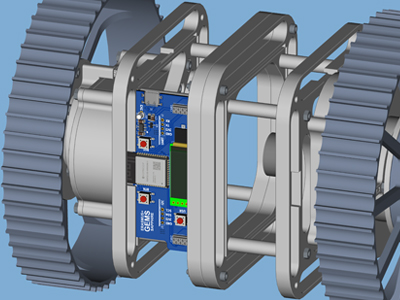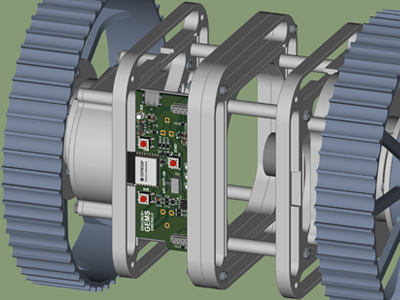Overview
Learn to design and develop sensor systems and data acquisition applications for embedded robotic systems.
Mechatronic systems are transforming our world, with robots as some of the most impactful examples. These versatile machines enhance efficiency across diverse fields, from manufacturing and agriculture to household tasks and space exploration.
Sensors and data acquisition are essential for enabling robots to respond and interact with the world around them.
This course provides fundamental knowledge and practical skills in sensor systems and data acquisition for mechatronics, with a focus on robotics.
Participants will learn to implement interactive applications in robotic systems, using a range of sensors and data acquisition methods.
Who is this course for?
Designed for engineering students and young engineers with little or no experience in sensing electronics, this course is also ideal for experienced professionals looking to expand or refresh their expertise.
A hands-on approach: build your own robot
One of the course's unique features is its use of modular mechatronic educational hardware.
This hardware facilitates a systematic approach to designing robotic applications, guiding you through the entire process of mechatronic system integration – from conceptualization and analysis to construction and control.
The open-source hardware and firmware enables customization, making it adaptable for various applications, including student thesis projects. Additionally, the course integrates knowledge of other robotics components, such as motor control, communication, and system integration, highlighting their role in sensors.
Full Program
This course is an initiative of the Erasmus + project GEMS (Graceful Equalizing of Mechatronics Students). It is part of the online program Building Robots: From Mechatronic Components to Robotics, developed by GEMS partners, with University of Alcala leading the part about sensing and data acquisition in robots.
What You'll Learn
- Explain the underlying principles of physical variables sensing
- Describe the electronic elements related to generic sensor modules
- Explain electronic sensing aspects (hardware and software) involved in a GEMS prototype
- Test and design sensing applications based on a GEMS prototype. From testing demos you’ll progress to design ad-hoc applications
After taking this course, you will be able to:
- Make critical design choices for a practical sensing system in a robotic application
- Work with other disciplines to acquire data from sensors for various applications
- Deploy sensing electronics hardware and implement the firmware to acquire the data
Details
Course Syllabus
Week 1: Introduction to sensing technology
- What does sensing mean?
- Sensing goals: monitoring and control
- The data involved
Week 2: Electronic support for sensing
- Basic architecture
- Different types of sensors
- Calibration and errors
Week 3: Acquisition and processing
- Characteristics of an acquisition system
- Analysis of discretization signal effects (Sampling, Noise)
- Example of acquisition and processing process
Week 4: Practice hardware and software issues for sensing
- Charlieplexing in Ruby
- Ultrasound distance sensing in Ruby
Week 5: Sensorial system within Ruby module
- Direction of Arrival (DoA) detection
- Design ad-hoc applications based on given examples
Qualifications
Chartered Engineering Competences
All our online courses and programs have been matched to the competences determined by KIVI’s Competence Structure, a common frame of reference for everyone, across all disciplines, levels and roles.
These competences apply to this course:
- A1: Extend your theoretical knowledge of new and advancing technologies.
- B2: Conduct appropriate research, and undertake design and development of new and creative engineering solutions.
Admission
This is a Massive Open Online Course (MOOC) that runs on edX.
Prerequisites
- Fundamental analogue and digital electronics
- Preliminary microcontroller programming experience


